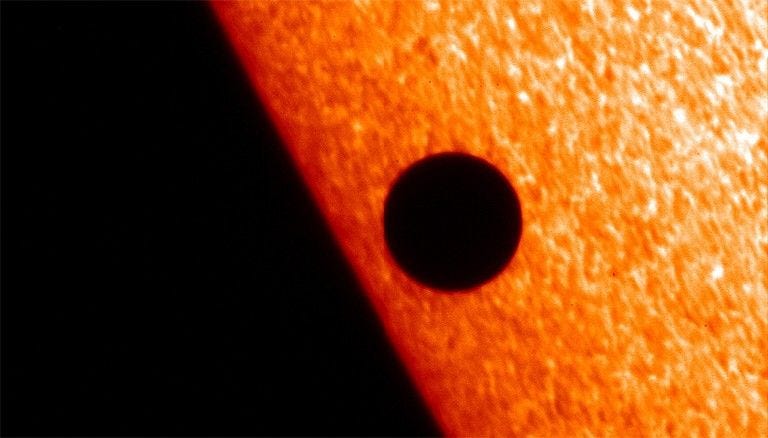On October 29, 2025, the interstellar object 3I/ATLAS will get to the closest distance of 203 million kilometers from the Sun, completing half of its journey through the Solar System. This would constitute half of the journey as long as nothing dramatic will happen to it at that time.
For a spacecraft, perihelion is the optimal time for either acceleration or deceleration by an impulse from an engine, thanks to the gravitational assist from the Sun. This is also true of a mothership releasing mini-probes that maneuver towards the planets. Unfortunately, we cannot observe 3I/ATLAS from Earth at this opportune time, which raises the question of whether its trajectory was fine-tuned by extraterrestrial intelligence?
As I explained today to Bill Hemmer and Dana Perino in America’s Newsroom on Fox News (in an interview accessible here), the fundamental question is whether 3I/ATLAS is a Trojan Horse with the external appearance of a natural comet but carrying a potential threat in its interior. The city of Troy would have been better served if its guardians were not fooled by external appearances. For that reason, I co-authored with Omer Eldadi and Gershon Tenenbaum a White Paper (accessible here), which encouraged policy makers to take seriously the potential threat from a black swan event involving an unusually massive object moving along the ecliptic plane like 3I/ATLAS.
Perihelion is just 2 days before Halloween. Is 3I/ATLAS wearing a custom of a comet or is it a truly icy rock of natural origin?
On November 3, 2025, 3I/ATLAS will come within a distance of 97 million kilometers from Venus. During the same week, it will be observable by the ESA mission, Juice, on its path to Jupiter. On December 19, 2025, 6 days before Christmas, 3I/ATLAS will get to a closest distance of 267 million kilometers from Earth, assuming a purely gravitational trajectory. Will 3I/ATLAS send mini-probes towards as Christmas gifts to humanity? I had asked my research team in the Galileo Project to check if there is any unusual activity by anomalous objects in the Earth’s atmosphere based on data collected from the three Galileo Observatories in the coming months. On March 16, 2026, 3I/ATLAS will arrive at its closest distance of 54 million kilometers from Jupiter, where the Juno spacecraft could image it and use its radio antenna to check from any radio transmission as a technological signature.
Thus, perihelion constitutes the acid test of 3I/ATLAS. If it is a natural comet glued together by weak forces, its heating by 770 watts per square meter may break it up into fragments which evaporate more quickly as a result of their larger surface area per unit mass. The resulting fireworks might generate a much brighter cometary plume of gas and dust around it. However, if 3I/ATLAS was technologically manufactured — as suggested by its high abundance of nickel relative to iron, it might maneuver or release mini-probes. Other technological signatures include artificial lights or excess heat from an engine. We will know the nature of 3I/ATLAS better in the coming months.
Also today, my Joe Rogan Experience was publicly released here. This 2.25-hour episode covered 3I/ATLAS, the search for alien technologies and the Galileo Project in search for Unidentified Anomalous Phenomena. I emphasized the need for cosmic modesty as we examine who else lives in our cosmic neighborhood and the potential threat from alien technology. On a blind date of interstellar proportions, we better observe our dating partners rather than be guided by the limited imagination of our fellow script writers in Hollywood.
Here’s hoping that we will be wise enough to learn something new and not be trapped in traditional echo chambers.
ABOUT THE AUTHOR
Avi Loeb is the head of the Galileo Project, founding director of Harvard University’s Black Hole Initiative, director of the Institute for Theory and Computation at the Harvard-Smithsonian Center for Astrophysics, and the former chair of the astronomy department at Harvard University (2011–2020). He is a former member of the President’s Council of Advisors on Science and Technology and a former chair of the Board on Physics and Astronomy of the National Academies. He is the bestselling author of “Extraterrestrial: The First Sign of Intelligent Life Beyond Earth” and a co-author of the textbook “Life in the Cosmos”, both published in 2021. The paperback edition of his new book, titled “Interstellar”, was published in August 2024.
First Appeared on
Source link













